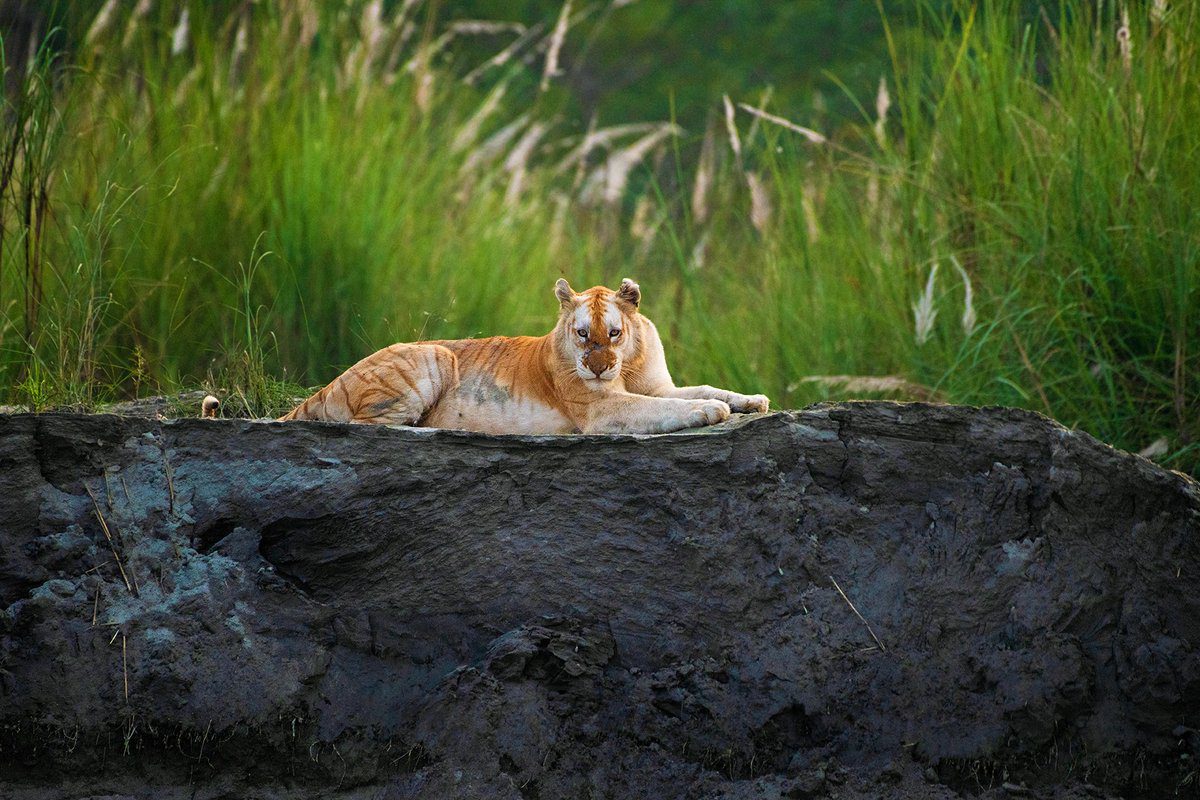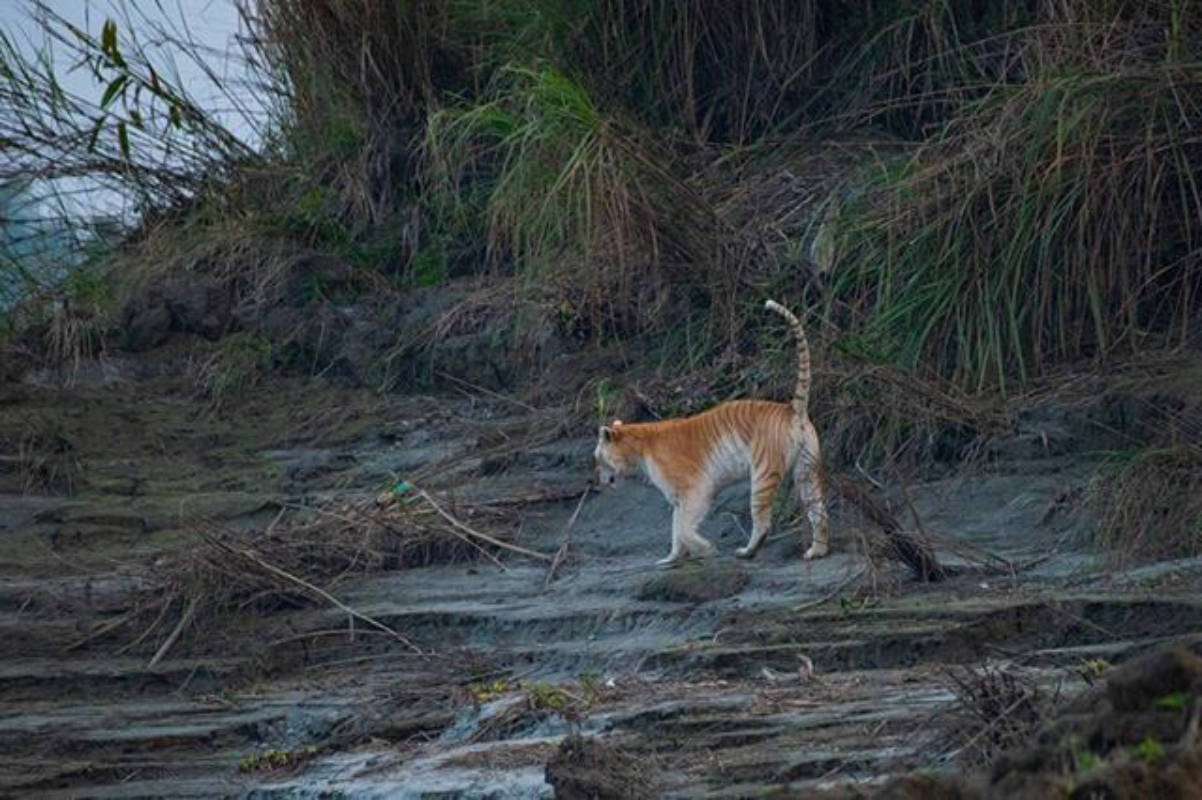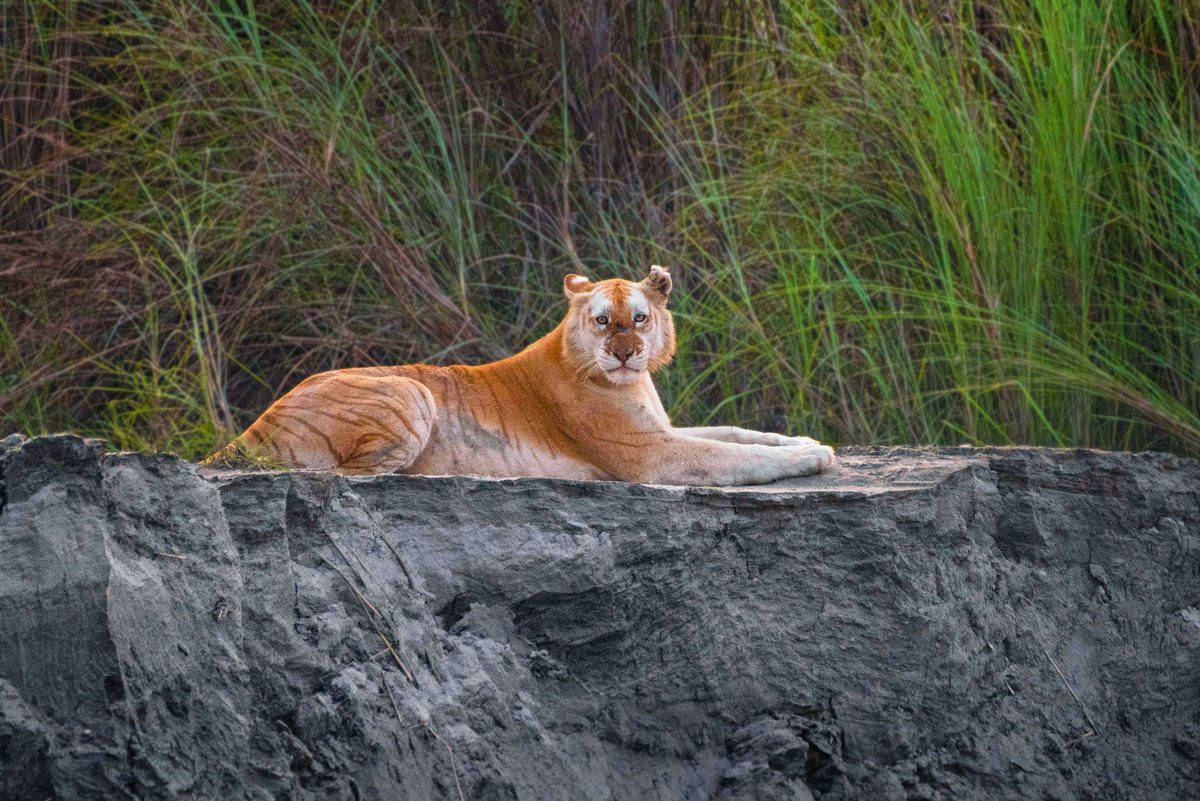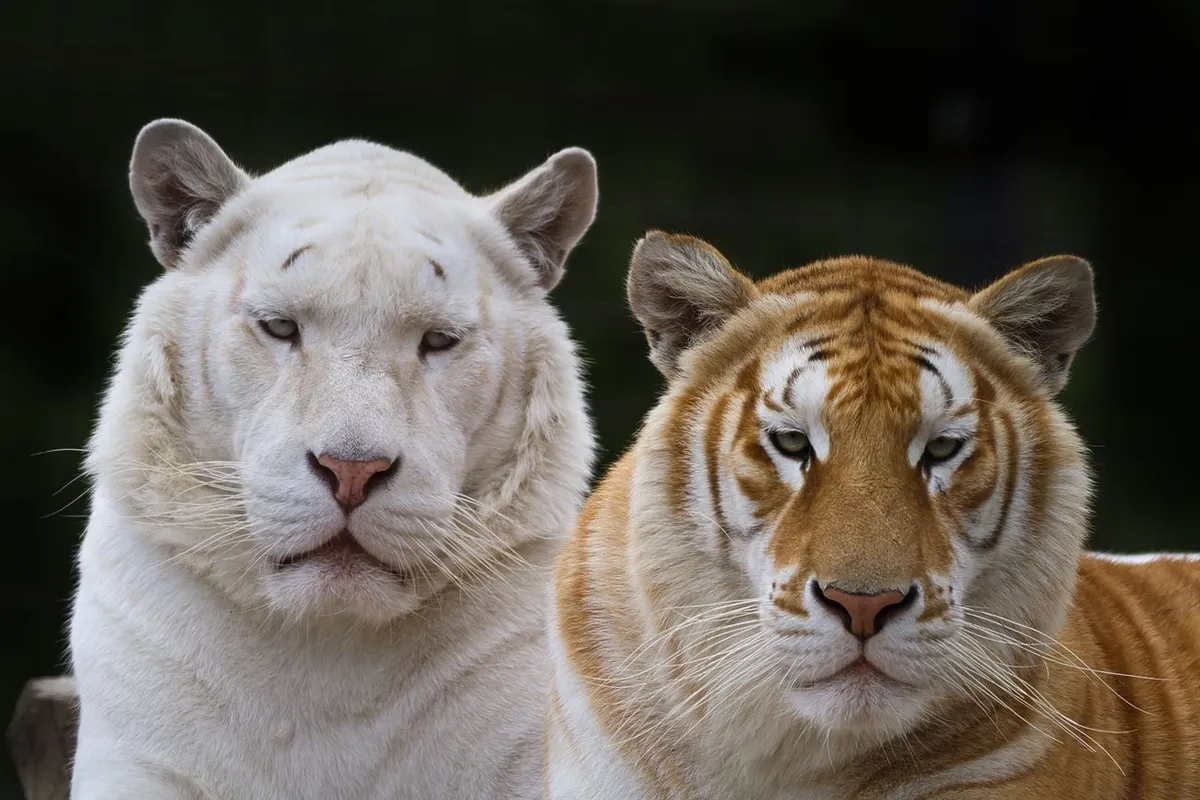The internet was left amazed after pictures of the only Golden Tiger in India were shared by Forest Officer Parveen Kaswan. Not many people around the world know that such a tiger even exists in the real world. So far, we only see these tigers in the fantasy world of Disney stories and Fairy Tales.
Social media users around India were mesmerized by the images of the Golden Tiger being circulated online. This extremely rare tiger has been spotted multiple times in Kaziranga National Park in Assam. Kaziranga National Park is on the list of UNESCO’s World Heritage Sites and is most famous for the Single Horn Indian Rhinocerous.
IFS Parveen Kaswan first shared images of this majestic Golden Tiger clicked by a Wildlife Photographer named Mayuresh Hendre at the Kaziranga National Park. After some days of posting the picture on Twitter, Parveen Kaswan, the images of the Golden Tiger attracted so many people around the world that the post went viral.
Do you know in #India we have a Golden #Tiger also. Only documentation of such big cat in 21st century on planet. This by Mayuresh Hendre. Look at this beauty. pic.twitter.com/8kiOy5fZQI
— Parveen Kaswan, IFS (@ParveenKaswan) July 10, 2020
The Post of this India’s first Golden Tiger is garnering more than 15,000 likes and around two thousand retweets, with comments pouring in.
This amazing creature was camera trapped every year starting in 2014. Golden Tiger is also known by the name Strawberry Tiger or Golden Tebby Tiger.
Initially, it was considered that the Golden Tiger was a new subspecies of the tiger, but then Wildlife Biologists discovered that they are in the same subspecies with the only difference in the color form, just like in the case of the Black Tiger and White Tiger.
About this Amazing Golden Tiger
The body of this amazing creature is of blonde or pale golden color with the addition of Red and Brown stripes, unlike the black colored stripes of the normal tiger. That means that these tigers have gold-colored fur with pale orange stripes and are supported by strong but pale-colored legs. They have thicker fur as compared to the usual tigers.

This variation in the golden tigers is caused by the presence of a special recessive gene in their body due to Extensive Inbreeding. Extensive Inbreeding is the condition in which continuous inbreeding causes the loss of genetic variations and an increase in homozygosity in a particular species or population, Which causes the expression of recessive genes and suppression of dominant genes.
This recessive trait in the Golden Tiger is called “Wideband”. In the case of wideband, the recessive characters suppress the production of black hairs during their hair growth, which causes the production of red and brown hairs.
India’s Only Golden Tiger Spotted for the First Time
These golden tigers were also present in Mysore before, but they became extinct in the wild in 1932 when the last two were shot in Mysore, India. They were then reintroduced into existence in 1987. The current discovery of this Golden Tiger in India makes the first documentation of the Golden Tiger in the 21st century.

The estimated population of Golden Tigers now is around 50 or maybe less in the whole world. It is a matter of both pride and concern as these species have to be protected.
Why Discovery of the Golden Tiger is a Matter of Concern?
According to the Research Officer of Kaziranga National Park, Rabindra Sharma, the discovery of this special tiger is a matter of concern and not pride. He further added that this color aberration of the tiger is due to extensive inbreeding, which is not a good sign for the population of tigers.

When the population of tigers is almost isolated, they resort to inbreeding. The isolated population of tigers without any connectivity to other landscapes causes the loss of their habitat and which eventually causes corridor destruction.
When Guinness World Records entered India’s Tiger Census for being the world’s biggest wildlife survey, the news of the sighting of the golden tiger came. As a result, the concern about the key tiger corridors facing threads like floods, forest fires, and coal mines has grown.
More power to the Indian Forest Officers protecting such an incredible and rear species.




